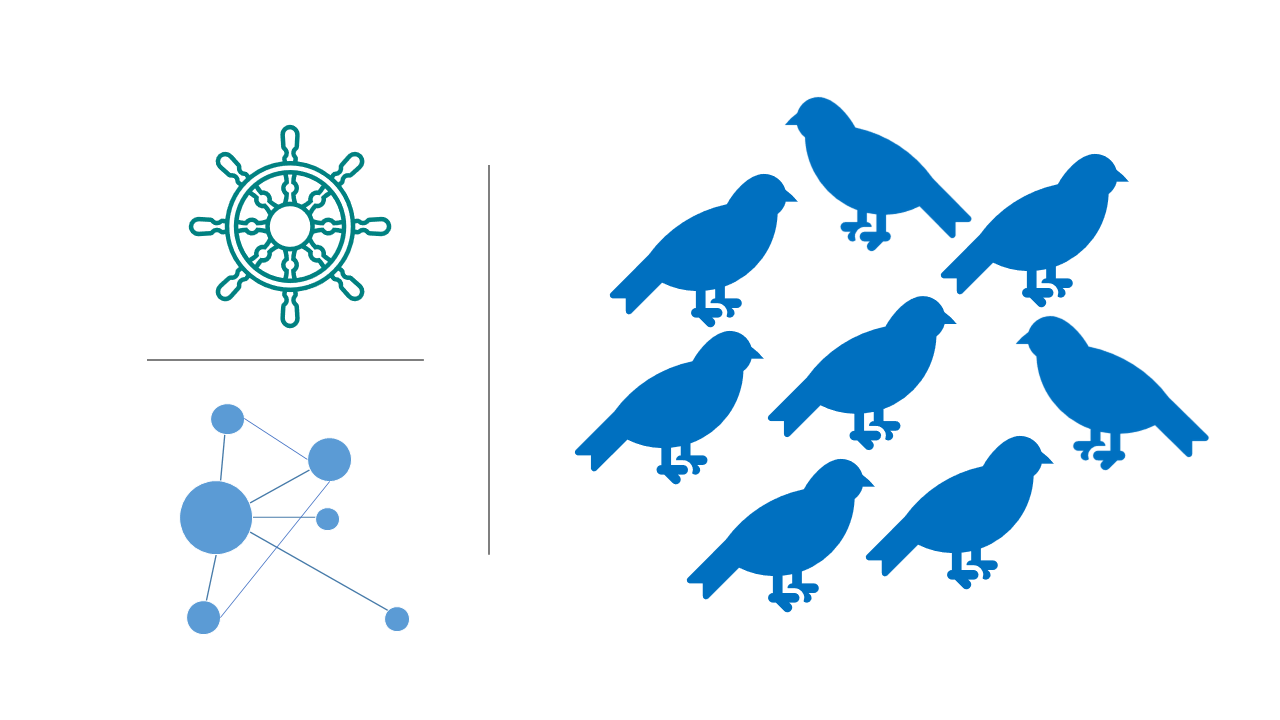Wheels, Webs and Birds

Modeling social innovation leadership
One of the key learnings from the WeavEast evaluation so far is the emergence of the wicked question around how best to build a social innovation network: a central versus a distributed model.
The work of social innovation speaks to both systems change and individual relationships. There is an inherent expectation of ethical relations, of respect for personhood and identity which can seem at tension with the need to connect across identities and other ‘distances’ to work towards a common goal. This can make the work more challenging in some respects than other “network building.” Below is a brief outline of three models of connection and their benefits and drawbacks in relation to our work of collective impact and systems change.
Hub and spoke: the traditional project management model

The benefits for network building of this style are that a strong, well-resourced and / or charismatic central figure can develop a strong circle of influence, and with the accountability of a central figure, there is a clear structure. The obvious drawback is, what happens when that person steps out of the role, or the resourcing for the role disappears? With project models, the project finishes and the team disperses, but when the intention is building a sustaining network, the soft connections between the spokes often disappear when the centre does not hold.
Web (Nodes and Connections): the ecosystem model
This is more often the network model we see in diagrams of ecosystems. Each actor in the network is a node, with different types of nodes often representing different types of organizations or actors. The size of the nodes will indicate the number of connections in the system. For instance, in an entrepreneurial ecosystem, larger nodes like banks or venture capital funds will usually have more connections than individual entrepreneurs. An example is the mapping work done by Dr. Ellen Farrell at the Sobey School of Business, Saint Mary’s University.

While this model does encourage stronger connections across the network, the model still relies in part on the centrality of some stronger nodes building connections to the wider whole. It can be challenging for an individual to see their impact on this kind of a network. It still contains elements of a traditional hierarchy. It is usually more sustainable than hub and spoke.
Murmuration: the social innovation and influence model?

Within murmurations, each starling influences its seven neighboring birds to affect the overall flight pattern of the large flock. Thus each is a responsive participant and active leader. This model may have the greatest potential as a pattern for a social innovation network, as described in Emergent Strategy by adrienne maree brown.
For more insight into starlings and murmurations, see Inspiring Communities’ Tyler Colbourne’s reflections on Starlings & Murmurations.
Share this:
No Comments
[…] Read more about murmurations as a social innovation model here. […]
Very cool!